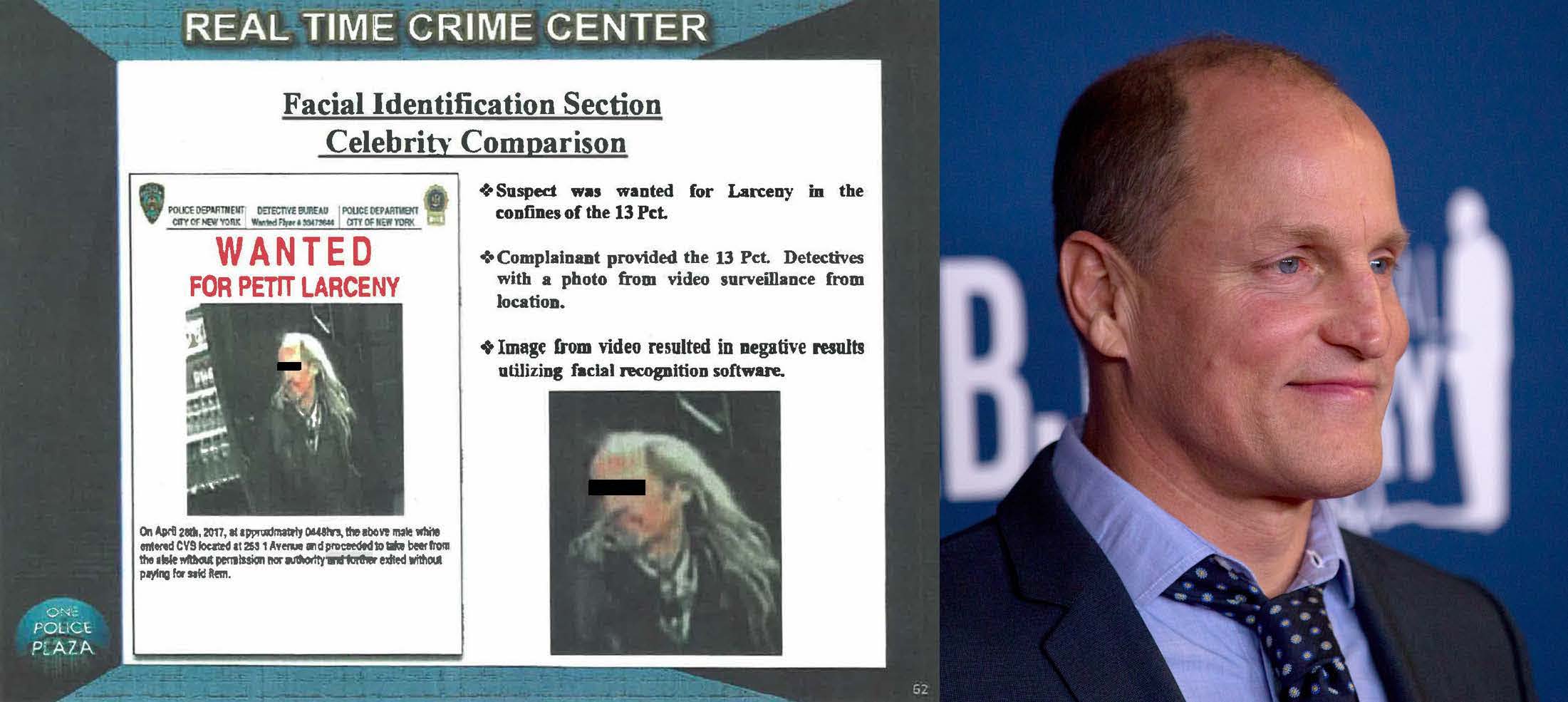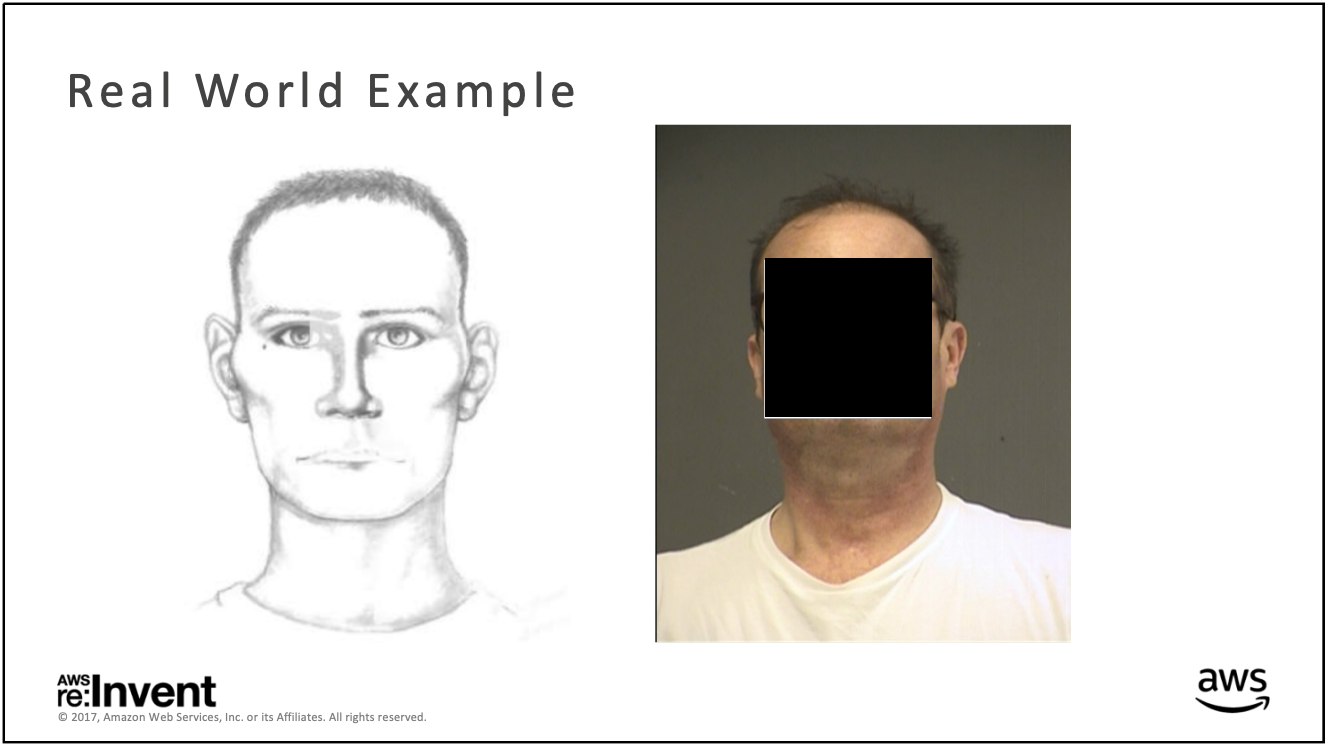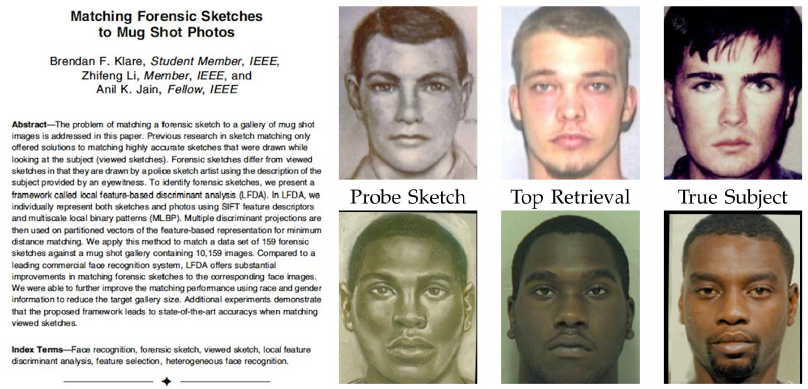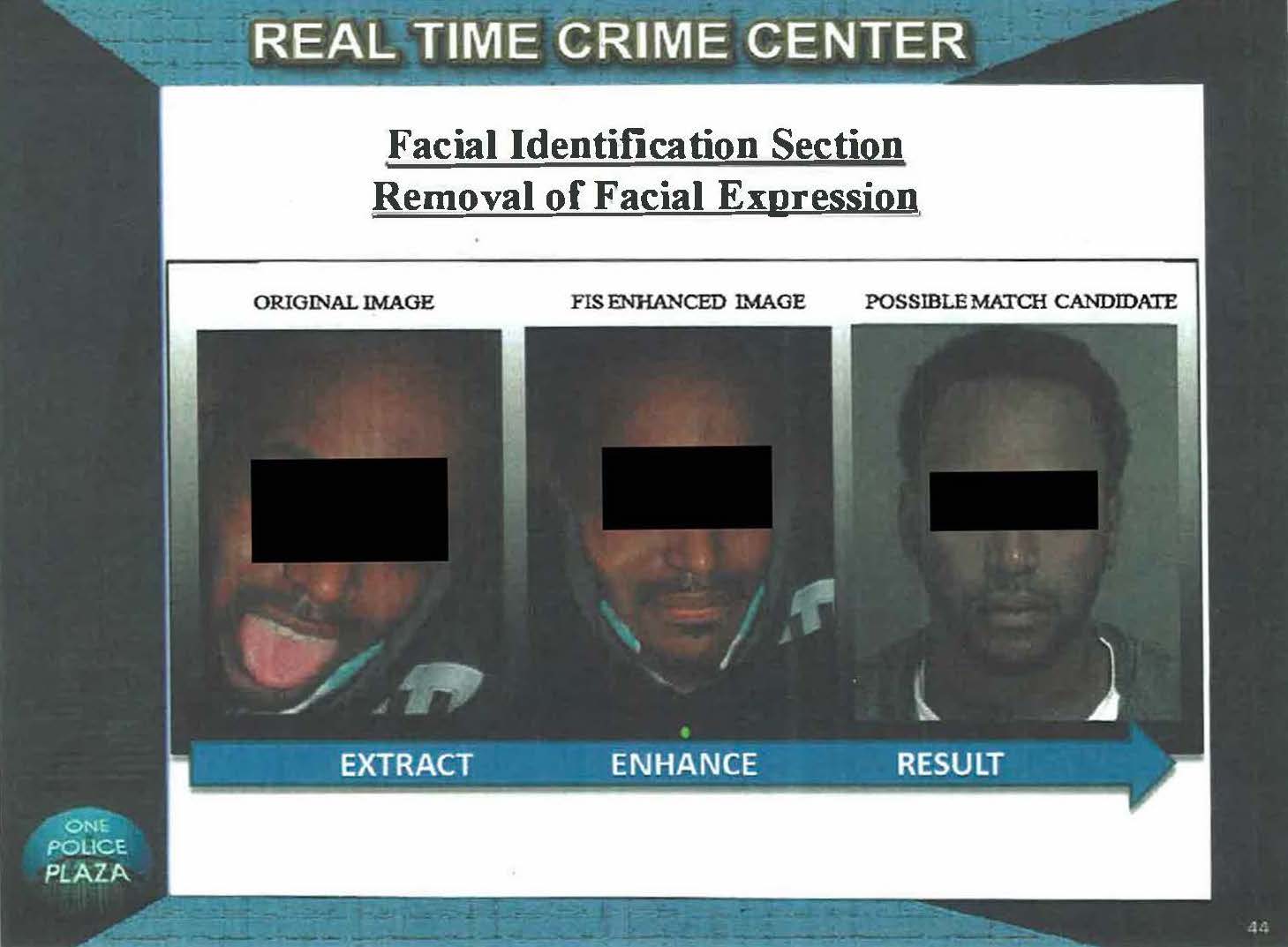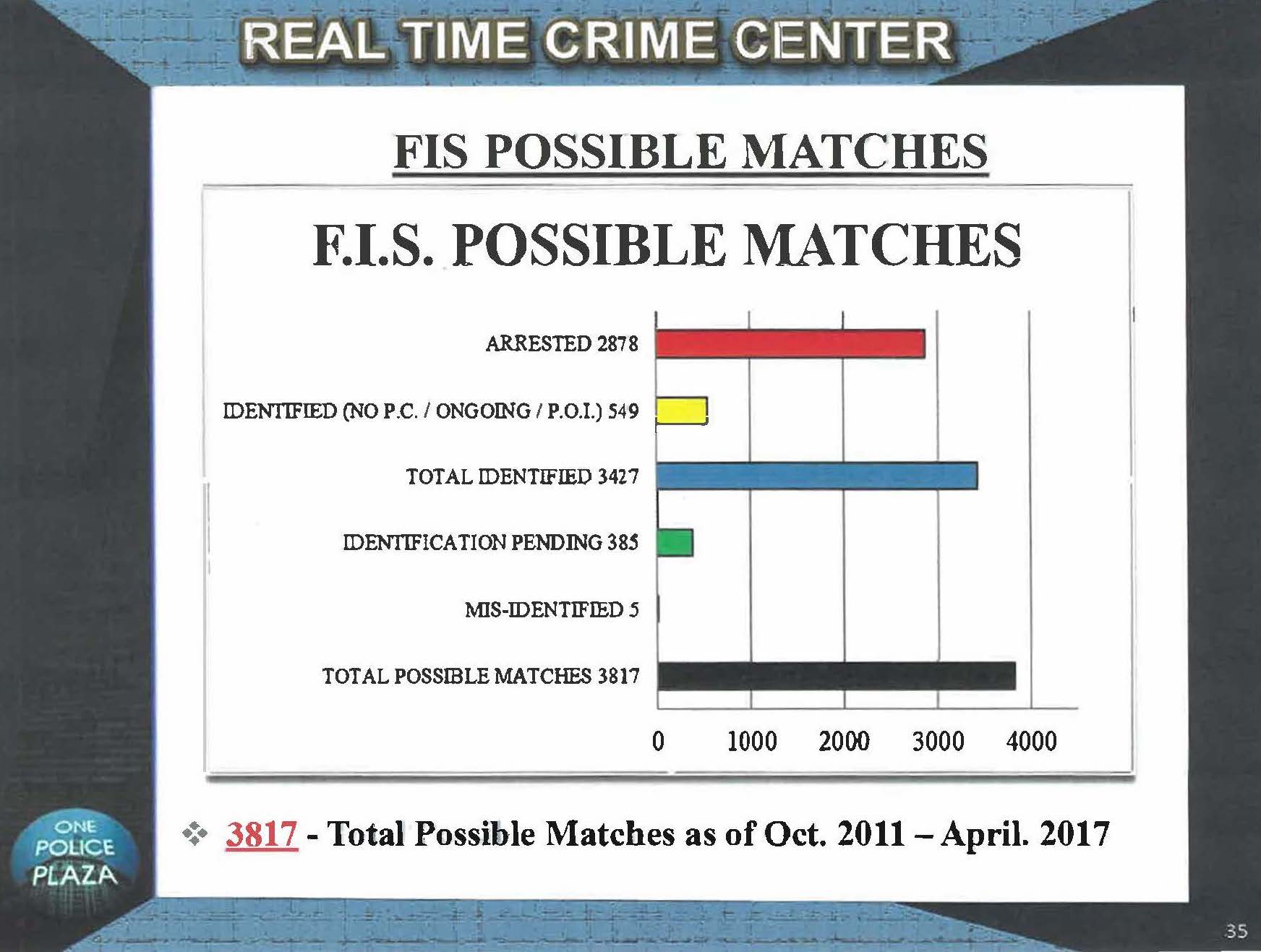On April 28, 2017, a suspect was caught on camera reportedly stealing beer from a CVS in New York City. The store surveillance camera that recorded the incident captured the suspect’s face, but it was partially obscured and highly pixelated. When the investigating detectives submitted the photo to the New York Police Department's (NYPD) facial recognition system, it returned no useful matches.1
Rather than concluding that the suspect could not be identified using face recognition, however, the detectives got creative.
One detective from the Facial Identification Section (FIS), responsible for conducting face recognition searches for the NYPD, noted that the suspect looked like the actor Woody Harrelson, known for his performances in Cheers, Natural Born Killers, True Detective, and other television shows and movies. A Google image search for the actor predictably returned high-quality images, which detectives then submitted to the face recognition algorithm in place of the suspect's photo. In the resulting list of possible candidates, the detectives identified someone they believed was a match—not to Harrelson but to the suspect whose photo had produced no possible hits.2
This celebrity “match” was sent back to the investigating officers, and someone who was not Woody Harrelson was eventually arrested for petit larceny.

